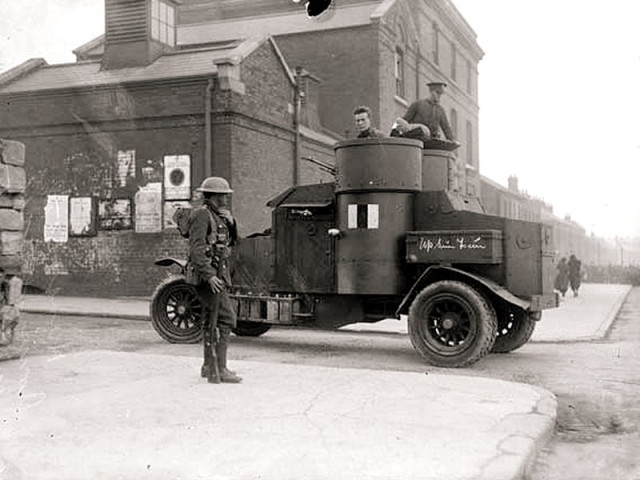
We were referring to the Irish Republican Army or the IRA and my education on The Troubles, or the civil war that raged in Northern Ireland for three decades (1969-1998) was taking place at the BBC’s office in Belfast*.
Throughout my visit I was stunned by the similarities with Karachi and its running sectarian and territorial wars. The more Kearney talked about Belfast, the more I felt he could have been talking about target killings, Shias, Sunnis, bomb blasts, Pathans, Mohajirs, morchas, TT pistols, funerals, protests, Sindhis. The only difference was that Northern Ireland managed to do something we have not: end the bloodshed.
Blame the British
It is beyond the scope of this story to go back in time, but it is worth mentioning how the British are linked to the Northern Ireland conflict and Karachi’s. I cannot shake the feeling that colonial rule should not be ignored.
In Ireland’s case, Catholicism has been the dominant sect ever since Saint Patrick introduced it to the island. But subsequent invasions from neighbouring England opened a chapter of sectarian discord and 700 years of colonisation. In the 1500s King Henry VIII decided to force the rival Protestant sect on Ireland’s Catholic population to quell rebellious Irish barons. He transplanted thousands of Protestant English and Scottish farmers to take over the lands of the native Catholic people.
This decision altered the fabric of Irish society. We saw the same happening in Karachi in 1947 when colonial rule ended and thousands of refugees poured over the border from India. This is not to question the merits of Partition but to simply point out that British rule and colonialism is also directly linked to the demographic shifts that changed Karachi’s fortunes forever. Mohajirs and Sindhis came to live together in one city.
In addition to Pakistan’s, the British were also responsible for the ‘Partition’ of Ireland. In 1921, after much Catholic rebellion, the British divided Ireland into six ‘Protestant’ counties in the north and 26 ‘Catholic’ ones in the south. The north became Northern Ireland and remained a part of the United Kingdom and crown. The south came to be called the independent Republic of Ireland.
As the island is still not unified, people still say that Ireland was England’s first colony and will be its last.
Divisions
Irish Catholics and Protestants thus developed their own schools, football teams, playing grounds, pubs. In Karachi, we have no-go areas. In Ireland, people could tell which side or group you belong to by your name or surname. This works in Karachi too.
In Belfast, you can tell whose turf you are on by the murals painted on houses to pay tribute to Catholic martyrs such as Bobby Sands, an IRA member and MP who died in prison on hunger strike. In Karachi, graffiti or wall-chalkings will declare who rules the area.
In both Belfast and Karachi, sectarian, political or ethnic loyalties are also declared by flags. I was curious about a Pakistan flag painted by the Protestant (Unionist) side. As the Unionists support the British government and monarchy, they were showing their support for its 54 Commonwealth countries (formerly under British rule). Pakistan has been a Commonwealth country. On the other hand, the Catholic (or nationalist or republican) side will support groups or countries that the British don’t back. This is why they put up flags of the Palestinian freedom fighters.
Karachi’s sectarian violence can be traced to 1983 when four French offices were bombed at time of tensions over France possibly selling arms to Iraq. Days later the city descended into chaos over reports that one sect wanted to build its place of worship in a rival sect’s neighbourhood. Mobs went on an arson and looting rampage and clashes with police left scores injured. Soon later, in the mid-1980s, sectarian militant outfits emerged on both sides and have since regularly shed each other’s blood on Karachi’s streets.
There are, of course, many significant differences between the IRA and the banned militant outfits (sectarian and political) that operate in Karachi. Most importantly, the IRA had declared demands and was a ‘public’ organisation, but the banned outfits in Karachi just seemed hell bent on a war of attrition, which does away with any possibility of bringing them to the negotiating table.
The violence
Northern Ireland’s civil war erupted in 1968 when rioting broke out there. British troops were brought in to restore order. But the IRA and Protestant paramilitary groups did not let go. The violence lingered into the 1990s and this period became known as The Troubles. More than 3,000 people were killed.
A surgeon in Karachi, who lived in Belfast and was training at the Royal Victoria Hospital during the 1970s, recalls the bloodshed: “There was a lot of knee-capping. They would shoot you in the knee,” he said, referring to the cases that came to the accident and emergency. “The vascular surgeons of Belfast became so good at treating it that they went on to read papers across the world on this injury.” Staff at Karachi’s Jinnah, Civil and Abbasi Shaheed hospitals will tell you the same story if you ask them about gunshot and bomb blast cases.
Aside from doctors, also on the sidelines of any conflict are journalists. In Belfast I was told that BBC struggled to figure out how best to cover the violence impartially. They used the ‘trick’ of declaring the victim’s sect — Catholic or Protestant. If there was a bombing they debated whether to say the IRA did it. The BBC eventually decided to name the IRA but this made coverage of funerals in Catholic areas especially dangerous and difficult. This same debate rages in Karachi newsrooms. Mostly journalists decide it is best to just name the victim’s ethnicity, sect or political affiliation if absolutely needed. Let the reader decide who the attacker is based on that.
Peace process
The lesson from Northern Ireland is a simple one — parties in a conflict must realise that the political process is the only way forward. This was the case with the IRA.
The first public talks began in 1994 between Sinn Féin (the political wing of the IRA) and British officials. Sinn Féin wanted the British out of Northern Ireland and the British said the IRA must first lay down its arms.
Former diplomat Jonathan Powell, the author of Great Hatred, Little Room: Making Peace in Northern Ireland, offers basic advice. ‘You can’t go forward with preconditions.’ I asked him how he thought Pakistan’s government should tackle, say the Taliban, and he referred to the British government’s persistent demand that the IRA disarm before it came to the negotiating table during Thatcher’s era. It wasn’t a formula that worked initially.
It would take over 10 years, several prime ministers and many failed rounds before both sides could claim success. Karachi has much to learn from the dogged commitment of leaders in the British government and in Ireland, despite many setbacks.
In the end, power-sharing and the political process trumped violence. Prime Minister Nawaz Sharif seems to understand this formula when it comes to a people at war with themselves. In his recent interview with The Telegraph, he said: “Britain had to talk to the IRA and resolve the problem and so to explore this option, I think, is not a bad idea.” While he referred to negotiations with the Taliban, the same approach would have to apply to Karachi.
But most of all, when the Catholics grew fed up of the bloodletting, they put pressure on the IRA to stop. Unless the people at large reject violence and withdraw support for those who perpetrate it, there cannot be peace. We seem to be missing this in Karachi. Such is the strength of people power that in 2002 the IRA issued its first apology to the families of the 650 civilians it killed since the late 1960s. Can there be peace in Karachi without truth and reconciliation?
Of course, some wounds stay raw. Today, if you hire a taxi as a tourist in Belfast, you might find that your driver is an ex-Catholic IRA militant. If you ask him to take you to a Protestant neighbourhood, he will only go as far as its ‘border’. He will hand you over to a new driver. That driver will be Protestant and he may even be an ex-militant himself.


1916
After several rebellions over the centuries, finally Irish nationalists stage the Easter Rising to declare their country an independent republic. The British crush it and execute its leaders
1921
The British partition Ireland into the independent state in the south (26 counties) and six Ulster counties in the north called Northern Ireland which remains part of the UK, under the Crown
1968
Unfair treatment of Catholics leads to a civil rights movement. In 1969, the Troubles start as rioting erupts in (London)Derry during a loyalist parade. Scores sign up with the IRA
1994
The IRA announces a ceasefire, loyalist groups follow suit. The first talks between the British government and the IRA’s political wing, Sinn Féin begin
1998
The Good Friday Agreement is signed for a political settlement for Northern Ireland
2005
IRA announces an end to its armed campaign. Sinn Féin president, Gerry Adams, wipes his brow after 10 hours of negotiations
*Adil Jawad is a correspondent with Roznama Express and visited Belfast as part of a 14-journalist group on the Chevening South Asia Journalism Programme 2013
WITH WRITING BY MAHIM MAHER
Published in The Express Tribune, Sunday Magazine, September 1st, 2013.
Like Express Tribune Magazine on Facebook, follow @ETribuneMag on Twitter to stay informed and join the conversation.

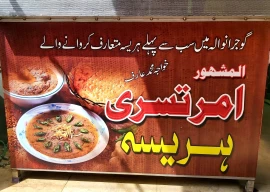
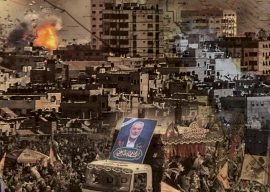
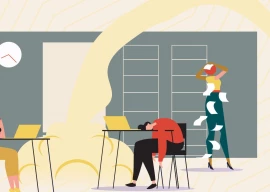

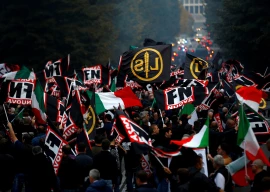

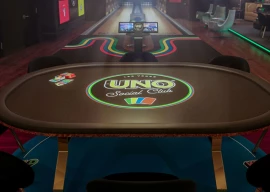
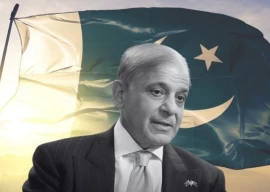









COMMENTS
Comments are moderated and generally will be posted if they are on-topic and not abusive.
For more information, please see our Comments FAQ